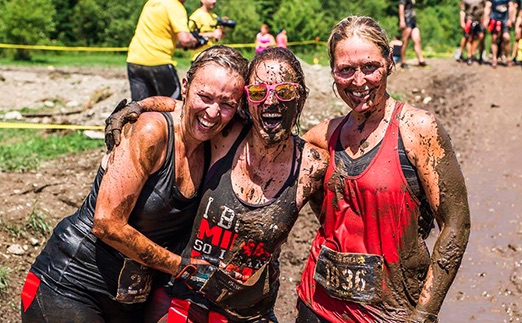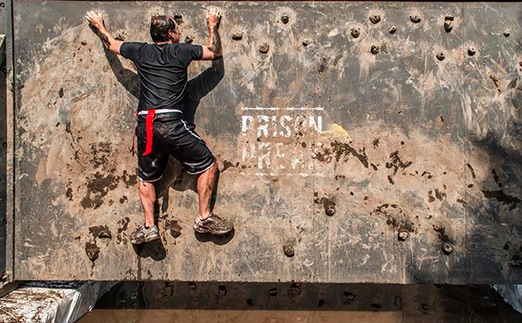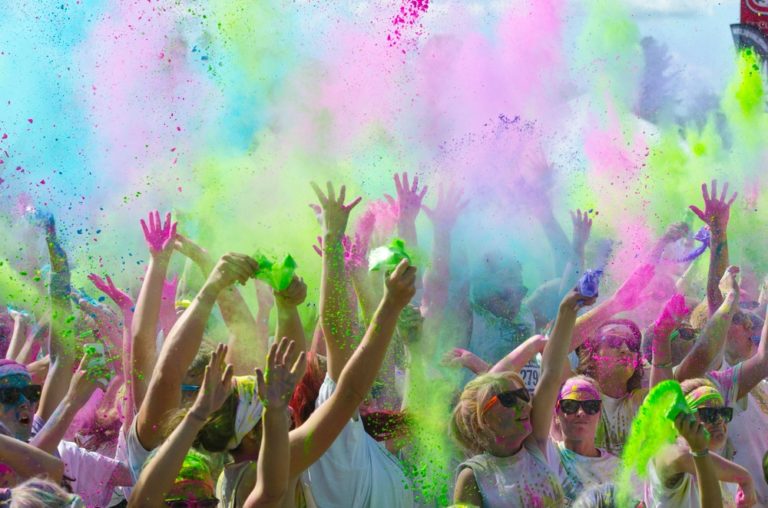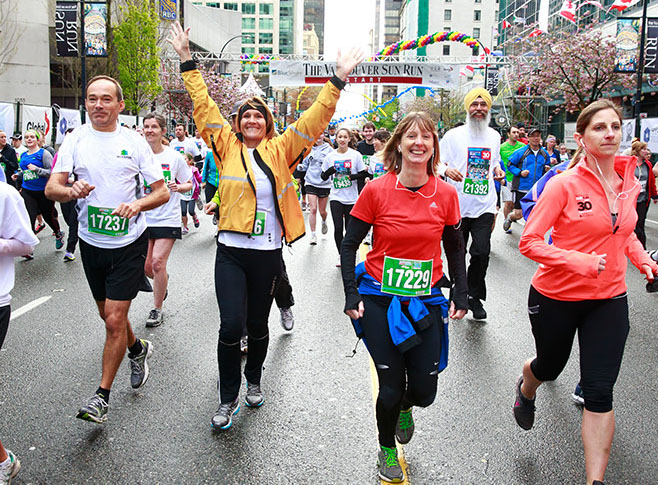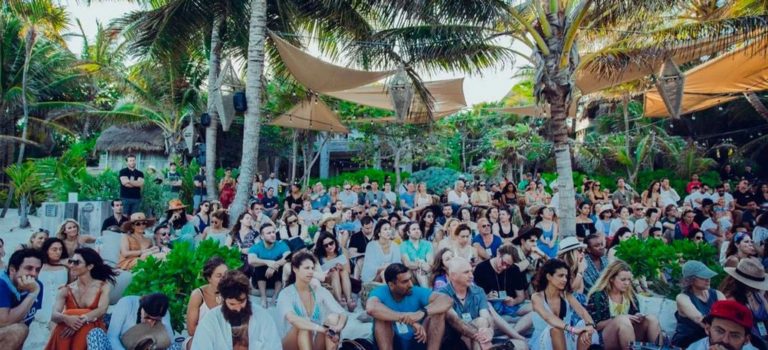EP: You’re going to find this funny. I’m actually a lawyer who had enough of working inside and wanted to go and play outside. It all started when I was training for a triathlon and a friend asked me if I wanted to do a Spartan Race
™ in Ottawa. I did it and I thought, “Hmm, this is interesting… really, really cool!” I had kind of snubbed obstacle racing at the beginning because I’m from triathlons. I wanted to set up my own event business, and I was already organizing events in Montreal, where I’m from. What really got me going were the participation rates at U.S. obstacle races like Tough Mudder, Spartan, and Warrior Dash. I really studied what they were doing, how their attendance was increasing, and I said, “All these American companies are coming to Quebec to organize these obstacle races; I think I can do as good!” I wanted to create something different like the flag football concept used in many zombie races in the U.S., but I wanted to have a concept that would be a bit tougher and less bloody. I really liked the aspect of being chased, but on different types of terrain. We did a market study with a focus group of 200 people and asked them about the zombie race, and our prison break concept. Prison Break was the No. 1 choice, which was my initial feeling, but I wanted to validate it. We used a marketing firm in Montréal and I put a business plan together because I wanted to start the company with no debt. Everything was going to be paid by the investors’ capital, and eventually the registrations. So that’s how it happened initially.
EP: The first year we organized three races. I knew there was a one-year gap where other Quebec companies would follow. Quebecers are the type that they follow the trend, and I knew if I wanted to succeed and make a living out of this, I really had to take the three biggest cities: Quebec City, Montreal, and Ottawa. And we basically sold out all three events. Because there was a deadline for the medals and the T-shirts that kind of stopped my registrations because we could only order 8,000 the first year, and we sold out, so we had to stop—nice problem. And then, as we anticipated, 2014 was tougher because all these Quebec companies started popping here and there. So, I think right now there’s saturation in the market, and the best will stay, which is probably the case in the U.S. and everywhere else now in North America.
EP: It’s really about your branding; everything is done on the Internet, and social media. So the branding was key for us. We put money on the website, we put money on the marketing firm. We did everything from Google AdWords to Facebook, to a radio campaign with young adult radio in Montreal and Ottawa. We also did a Groupon campaign where we sold 1,500 entries in a day and a half. Then we had a cutoff date where if we didn’t have a minimum number of registrations, we were stopping everything. So, two months before our first race, we didn’t have our first plank yet! We had all our obstacles designed, but there was that key date, which was around May 1, that we told each other if we have 400 participants per race (about 1,200 for three races) we’ll go ahead. Our strategy was to be after Spartan, which came to Montreal in the spring. We positioned ourselves in the fall (September) and the summer (end of August). And our bet was people would want to do a second one, like you do triathlon or marathon, so our strategy, the calendar dates, were very key to our success also. We were about at the limit, and we decided to go ahead anyways, and then after the Spartan Race we exploded and sold 60 percent of our registrations in June.
EP: It’s a big “be careful” tool. I think it’s a good tool, but it’s also a pain because of taxes, and you’ve got to collect the taxes, and this and that. It used to be very powerful, but they changed it a bit. When I used it, you were basically part of their mass email and in Quebec they were bragging about having 800,000 people on their list. And there was not enough offers to divide them according to profile, because they didn’t have their profiling done at that time. So, basically your offer was in all these inboxes, and even if you didn’t sell them all, just the amount of people it went to was so powerful that it was worth the lost margin. Because then you would cap, usually the margins: you get 50 percent off, they take 25 to 30 percent, and you actually lose money, but it’s a way to start. We didn’t want to create a precedent where people expect that (Groupon) happens every year, so we communicated to our participants the next year, “Don’t wait for Groupon; there won’t be any.”
EP: First, we checked to see if ‘prison break’ was trademarked, and it wasn’t because it’s a general expression. So we trademarked “Prison Break Race” and our logo in Canada. And we know that the concept can be exported, but I want to have my bases solid before I expand. There’s strong competition now in the Quebec market and we were voted No. 1 most fun and No. 2 in the obstacle quality of our race last year, so we want to stay and deliver quality. We limit our waves to 200 people so that there’s no clog in the race, compared to other companies who have 400 people leaving at once, which causes up to a 30-minute wait at each obstacle. My strategy was: we stay and we become an annual event where people don’t have a choice. They’re going to come because it’s fun and because we’re going to have new obstacles, and because we fall in between Mud Hero (Canada), which is all about fun and mud, and Spartan/Tough Mudder (U.S.), which is all about “I’m tough, I’m about obstacles.” There’s a fun side to our race because there’s that chase aspect. People dress up, they have fun, and we have an amazing party, a great DJ, and a great maître d’ who talks to the crowds.
EP: Good question. We decided we had to immerse the participants in a real prison setting. It starts from the jail, which has guard towers and a four-colored event pen. What’s so different about Prison Break is the, “I want to escape” scene where you’re actually running, and for me that is key. I’ve done many obstacle races and what I don’t like is that you walk: up a hill, because it’s too steep to run, and you walk down because it’s so dangerous that you can’t run down or you’re going to hurt yourself and fall, which I’ve done. We offer diversified terrain—you’re going to suffer; there’s going to be hills and trails, but we have a lot of water and participants will get wet at least eight to nine times during a race. The flat open areas are very special to us because of the prison guards. But we try to communicate is that people don’t have to stress that the prison guards chase them for the whole race. The guards are all grouped in five zones, so you really have to sprint through the zones. By the end if you keep at least one flag, then you go directly to your prizes. If you have no flags left at the end, you’re sent to the mud pit, and then you still get your medal, your T-shirt, and your free beer. Sorry, that was a long answer.
EP: Obviously it starts with contact, but sponsors won’t come back if you don’t treat them properly. From working sports events I see two types: event organizers who basically sell you the sponsorship, take your money, give you your 10 x 10 space, and that’s it. Then there the event organizers we try to be, where we have a visibility plan, and go beyond that. On event day is give each sponsor a personal concierge so they know where to put their tent, how to make an announcement, and if there’s something special going on at their kiosk. We encourage them to have activities. Not just be there to show their product, but to do contests, stuff like that. So, we educate our sponsors to be better when they show up, but we also make them feel important when they’re on-site.
EP: I believe in market research to a certain extent, and mine was crucial in the sense that it validated a lot the numbers, at least to quit my job and to be able to live off of it. And it’s always tricky to start an event company because if you only have one event, you’ve got to keep your day job. So, need a plan for that first year that it is about more than one event. And then you have to be realistic in your projections. I’m actually full-time in the winter, trying to set up my summer season. So to be really successful, I think you need to be full-time, and to be full-time you need to have a really aggressive plan for the first year, but be realistic at the same time. And beyond that, it’s all about the brand. If you’re going to put money in something, and that’s where I’m so happy we did it, because I’m comparing our website, our logo, our brand, product, and everything we do, and I think it is par with some of the big names out there, and for me that was key. Because I knew competition was going to come, and when competition comes, when people have choices, they’ll look at the coolest brand, the coolest experience.
For more information about Prison Break or to register for an event, visit PrisonBreakRace.ca.
Follow Prison Break on Facebook, Instagram, and YouTube.
All images courtesy of Prison Break Race.
